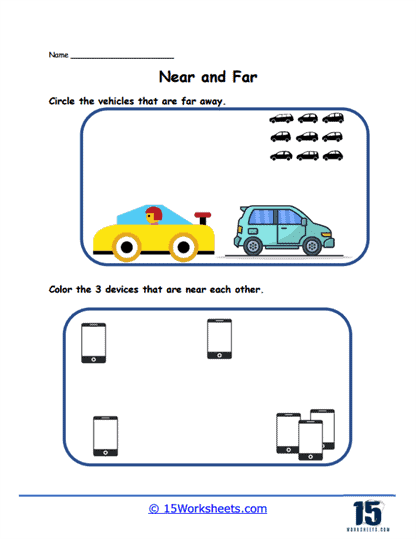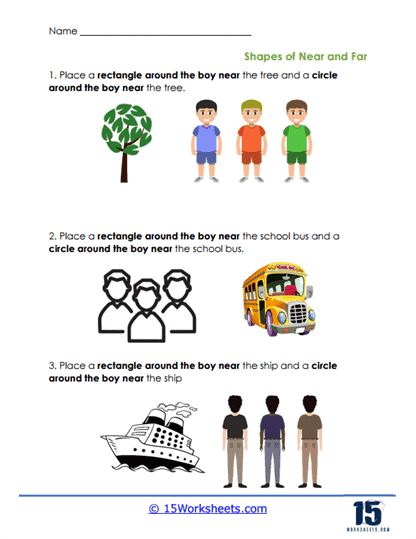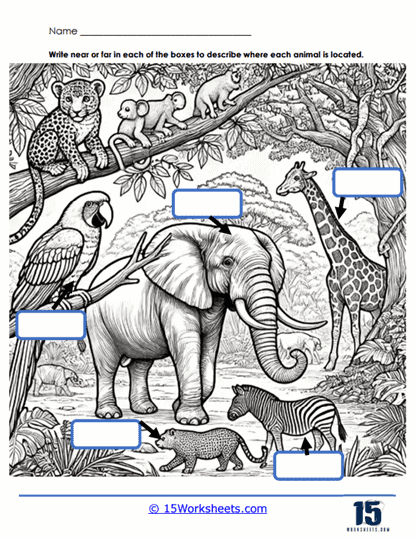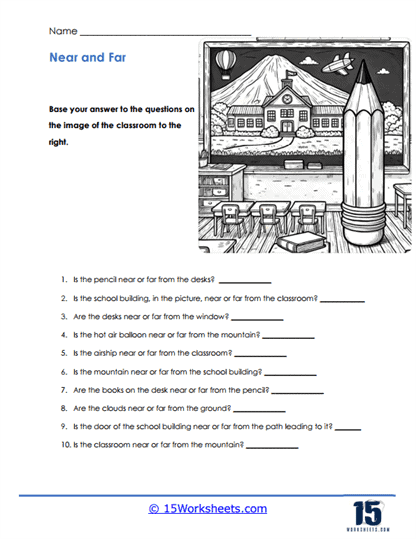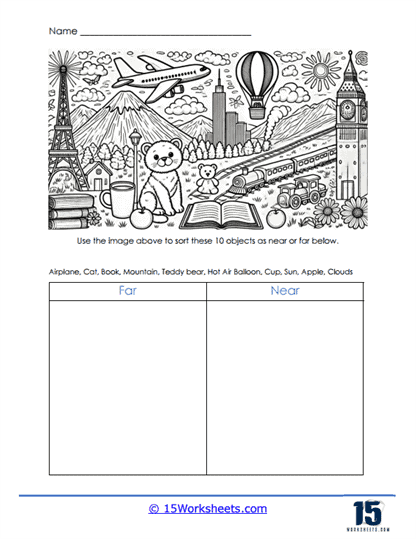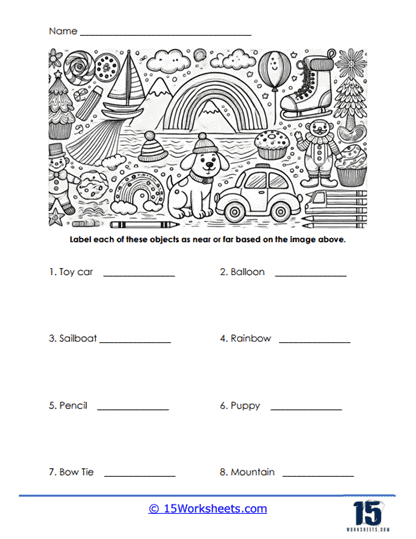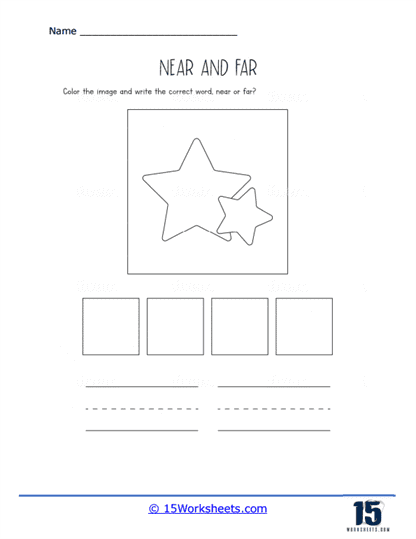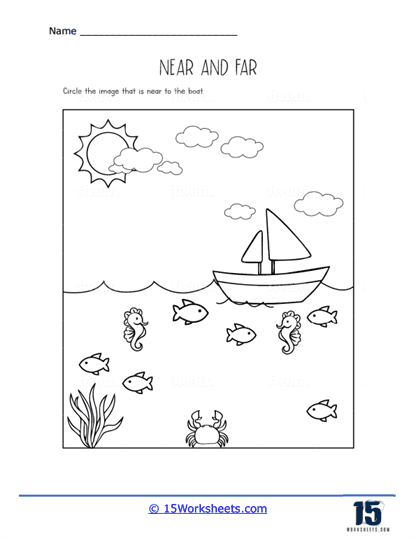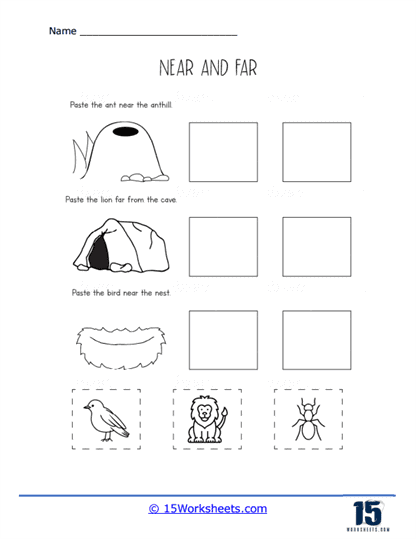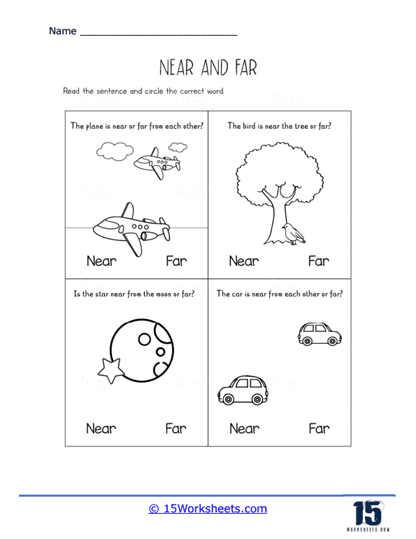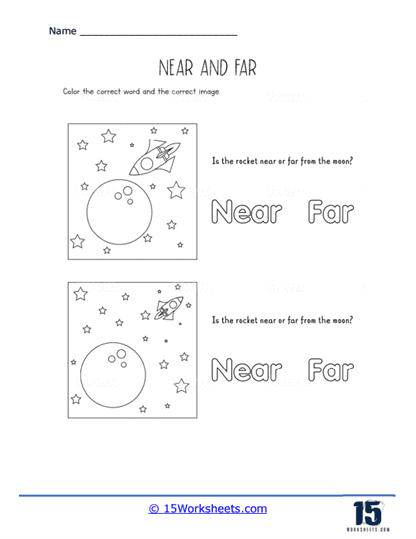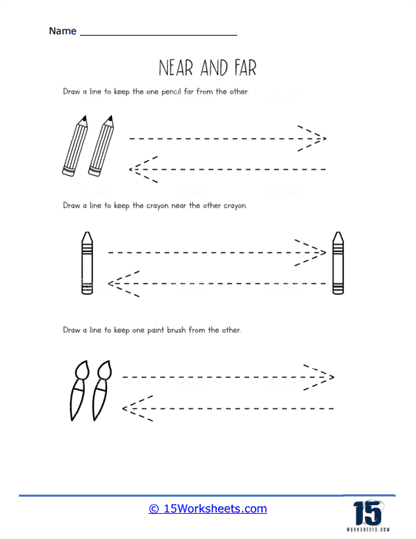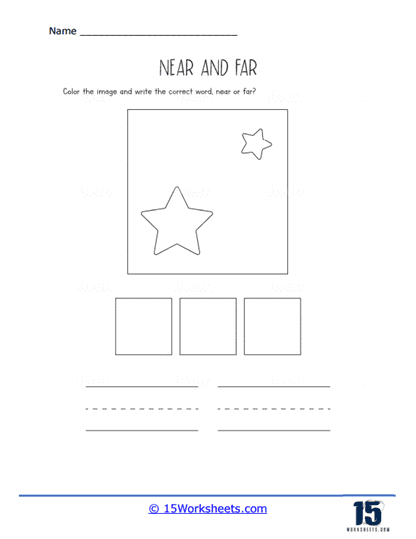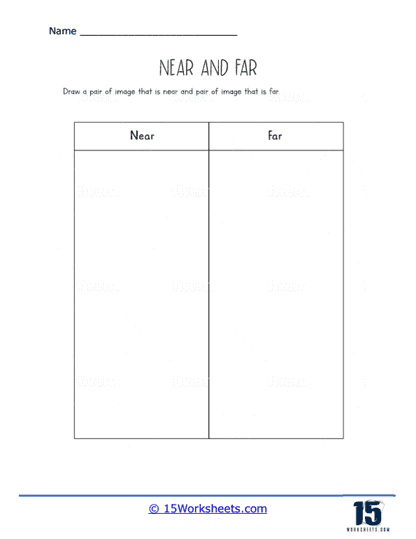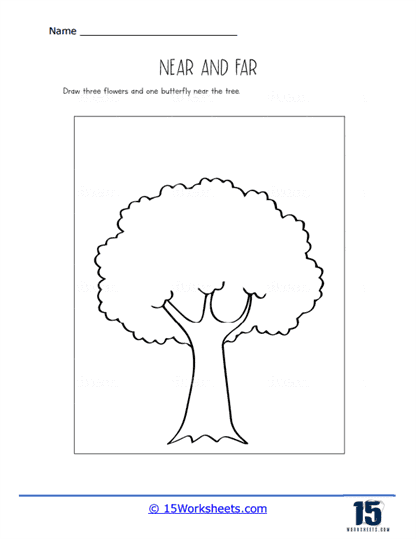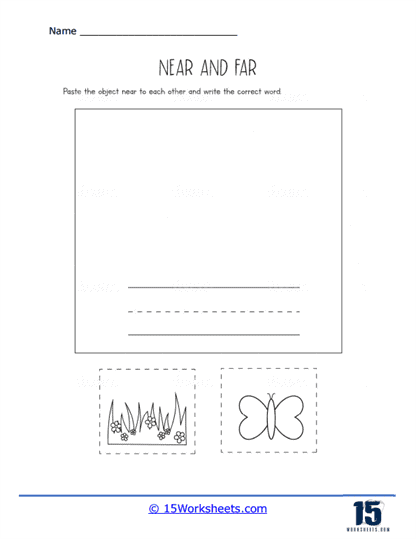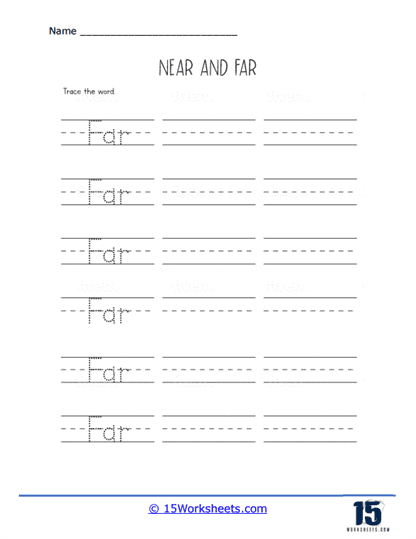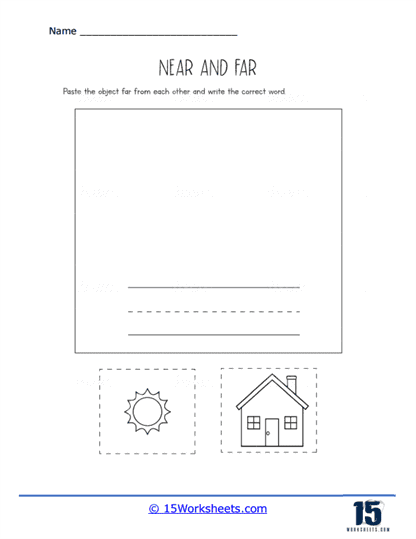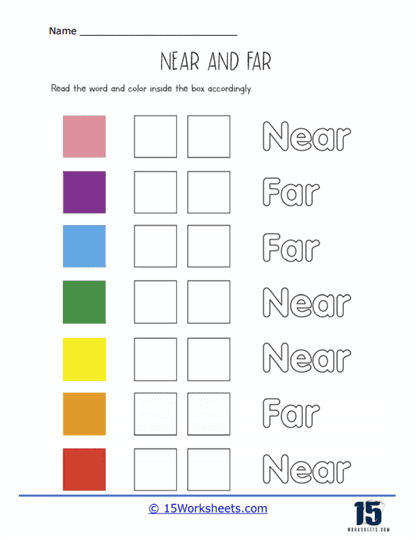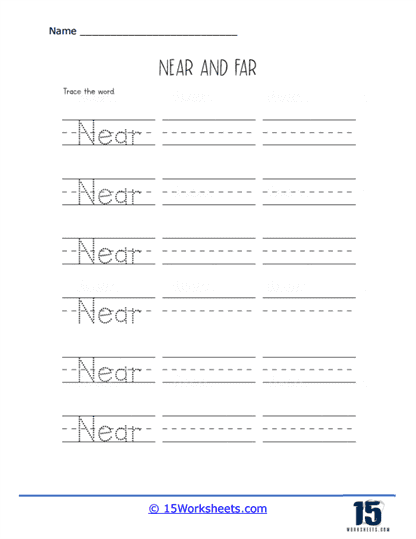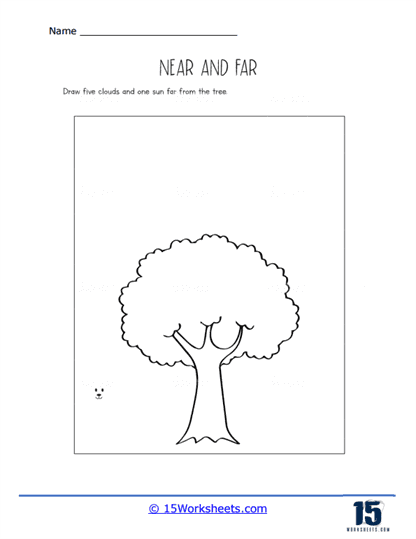Near or Far Worksheets
About These 15 Worksheets
These worksheets are used in preschool or elementary school to help children understand the concept of spatial awareness, which is simply understanding objects in relation to oneself and each other. Spatial awareness is a fundamental skill that helps us navigate our world.
These worksheets would typically have pictures or illustrations of various objects or situations and the child’s task would be to identify whether the object or situation is near or far. For example, there might be two pictures of a cat – one close up and one from a distance. The child would then have to identify which cat is near and which is far.
Think of it like this: Imagine you’re playing a video game where you control a character. Knowing if an object or enemy is near or far from your character can make a huge difference in how you play the game. If the enemy is far away, maybe you’ll choose to run towards it, but if it’s too close, maybe it’s better to back up. That’s spatial awareness in action!
How Best to Teach This Concept
Teaching the concept of near and far position is an important foundational skill for children as it helps them develop spatial awareness and understand the relative distance between objects. By using various strategies and activities, educators can effectively teach this concept to young learners.
Begin by introducing the terms “near” and “far” to the children. Use simple language and visual aids, such as pictures or objects, to demonstrate the difference between the two concepts. Explain that “near” means close or short distance, while “far” means distant or long distance.
Help children connect the concept of near and far to their everyday experiences. Take them on a walk around the classroom, school, or playground, pointing out objects that are near and those that are far away. Encourage them to identify and describe the objects using the appropriate terms.
Engage children in hands-on activities to reinforce their understanding of near and far. Provide them with objects of different sizes and ask them to place them in various positions, such as near or far from a specific reference point. For instance, they can place small objects near a toy house and larger objects far away from it.
Use visual cues to support children’s understanding. You can create simple illustrations or diagrams that depict near and far positions. Display these visuals in the classroom and refer to them during discussions or activities. Encourage children to use the visuals as references when describing the position of objects.
Focus on building vocabulary related to near and far. Introduce words like “closer,” “closest,” “distant,” and “farthest” to expand their understanding. Encourage children to use these words while describing the position of objects during discussions and activities.
Facilitate comparisons between objects to emphasize the concept of near and far. Use objects of different sizes and ask questions like, “Is the teddy bear closer to the doll or the tree?” Encourage children to analyze and make comparisons based on the relative distances.
Incorporate movement-based activities to enhance children’s understanding of near and far. For instance, organize a game where children have to run to a specific object that is either near or far from their starting point. This physical engagement helps solidify the concept in their minds.
Provide sorting tasks to help children practice identifying and categorizing objects based on their position. Prepare a set of pictures or objects and ask children to sort them into two groups: near and far. This activity reinforces their comprehension and observation skills.
Utilize playtime as an opportunity to reinforce the concept. Set up a small play area with toys and props, creating scenarios where children can manipulate objects in near or far positions. Encourage them to create their own narratives, incorporating the concept of near and far.

